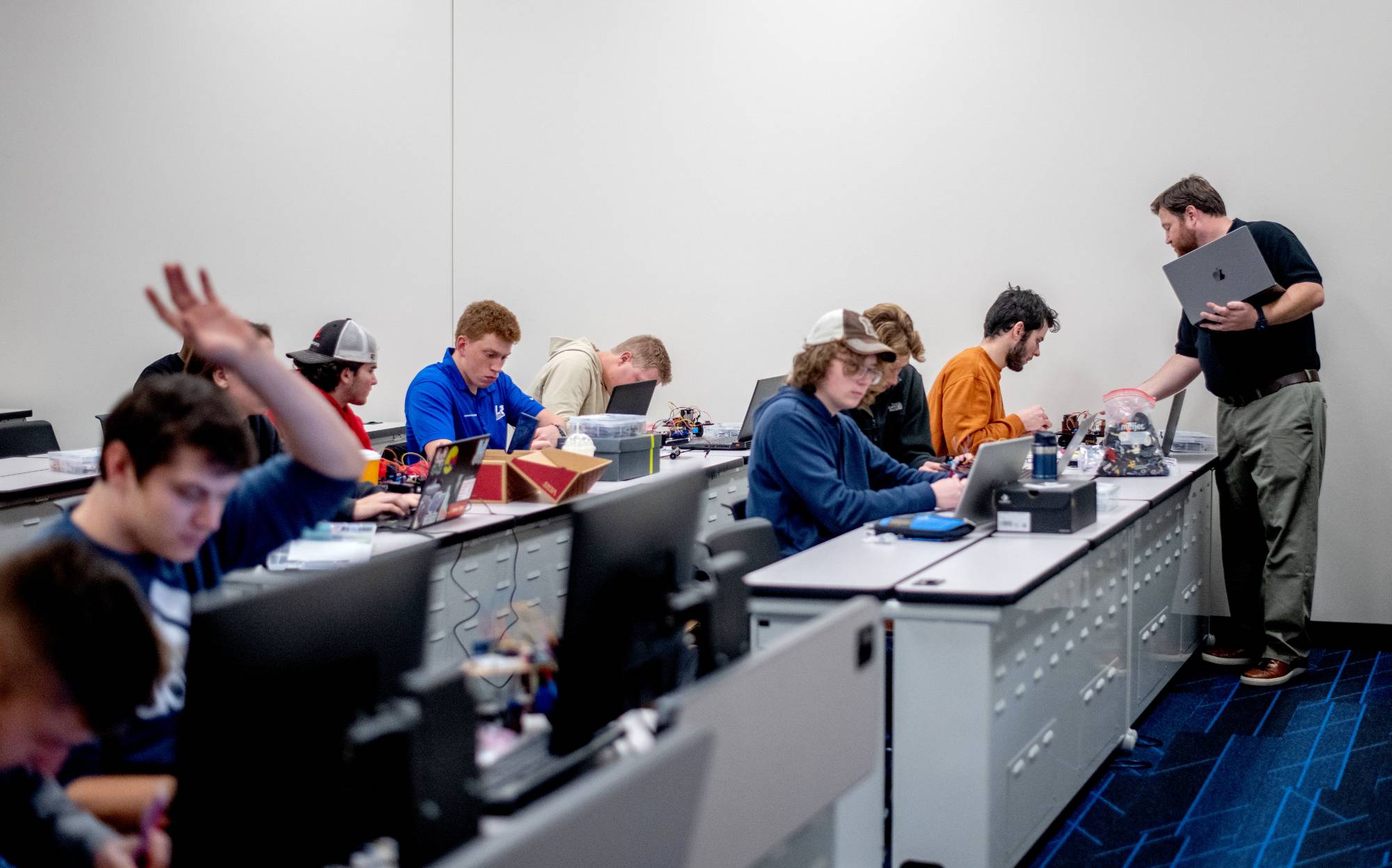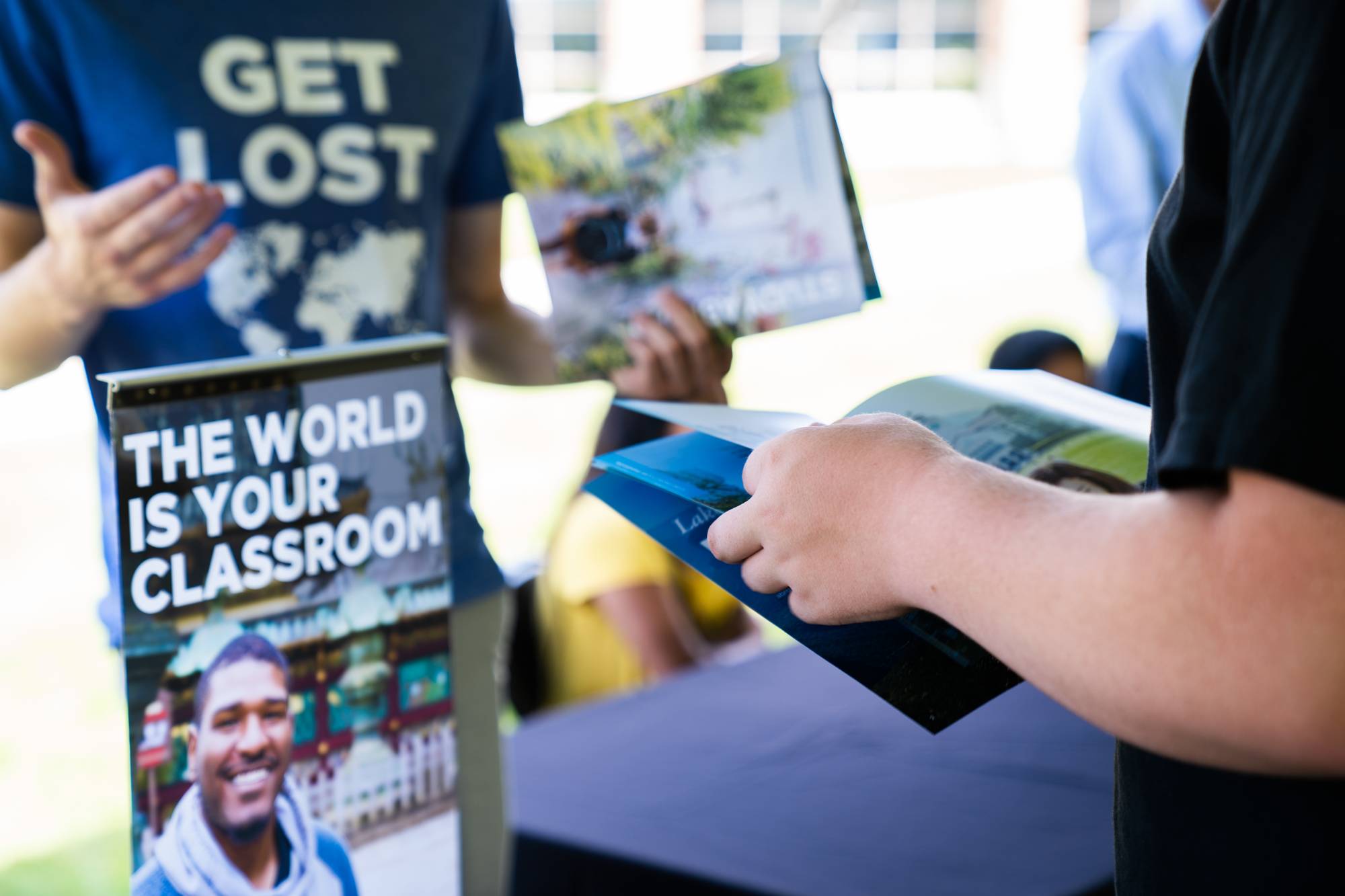Student Learning Outcomes

Grand Valley State University uses student outcomes as the primary measure of assessment within each unit: Student Learning Outcomes (SLOs) for academic affairs programs and Student Centered Outcomes (SCOs) for some co-curricular units within Academic Affairs, but also within other divisions on campus.
What are Student Learning Outcomes (SLOs)?
SLOs are measurable statements of the knowledge, skills, attitudes, and habits of mind that students acquire as a result of the learning experience. SLOs define the fundamental student learning competencies for a program. SLOs focus on learning outcomes (content mastery, skills) that students should know or be able to demonstrate upon completion of a class or the program.
What are Student Centered Outcomes (SCOs)?
SCOs are a measurable statement based on intentionally designed activities, programs, and services that reinforce the institution’s mission and values and complement the formal curriculum. SCOs are intended to be used by some co-curricular entities such as study abroad, advising centers, and many student services units.


Student Outcomes Assessment at GVSU
Each program/unit with curricular (undergraduate and graduate) or co-curricular activities is required to generate learning outcomes for their students. For each learning outcome, programs/units determine how they will assess and measure progress and then how they will make improvements when justified based on data collected. Each program/unit is expected to report progress annually regarding assessment of SLOs and SCOs. The University Assessment Committee is the shared governance committee that oversees the reporting of SLOs and SCOs.
In addition to program and unit learning outcomes above, the university has adopted the Skills Learning Outcomes of the General Education Program as institution-level SLOs for undergraduate students. These institutional level SLOs are coordinated and overseen by the General Education Committee.
Institution-level Undergraduate SLOs
1. Collaboration: Effectively work on a team.
Students will:
- Help the team move forward by articulating the merits of alternative ideas or proposals.
- Engage team members in ways that facilitate their contributions to meetings by both constructively building upon or synthesizing the contributions of others as well as noticing when someone is not participating and inviting them to engage.
- Complete all assigned tasks by the deadline; work accomplished is thorough, comprehensive, and advances the project; proactively helps other team members complete their assigned tasks.
- Actively promote a constructive team climate.
2. Critical Thinking: Comprehensively evaluate issues, ideas, artifacts, or events before forming a conclusion.
Students will:
- State an issue clearly and describe it comprehensively.
- Use appropriate evidence that includes relevant context(s), which facilitates a comprehensive analysis or synthesis of the issue.
- Develop a position that thoroughly takes into account the complexities of an issue, limits of the position, and synthesizes others’ points of view.
- Develop conclusions, implications, and consequences that are logical and reflect an informed evaluation based on strength of evidence.
3. Ethical Reasoning: Apply ethical principles and codes of conduct to decision making.
Students will:
- Recognize ethical issues when presented in a complex, multilayered (gray) context and recognize interrelationships among the issues.
- Name the major ethical theory or theories used, present the gist of said theory or theories, and thoroughly and accurately explain the details of the theory or theories used.
- Apply ethical theories to a complex issue accurately and consider the full implications of the application.
- State a position in-depth and effectively defend against other ethical perspectives.
4. Information Literacy: Identify the need for information; access, evaluate, and use information effectively, ethically, and legally.
Students will:
- Define the scope of the research question or thesis with clarity and appropriate depth.
- Access information by using effective, well-designed search strategies and the most relevant research tools.
- Choose a variety of quality sources appropriate to the scope and discipline of the research question, incorporating seminal works and essential theorists/thinkers by using multiple evaluative criteria.
- Organize and synthesize information from sources to fully achieve the intended purpose, with clarity and depth.
- Completely and accurately cite all information sources used by appropriately paraphrasing, summarizing, and quoting.
5. Integration: Apply knowledge from experiences and multiple disciplines to new, complex situation.
Students will:
- Connect experiences to most relevant concepts/theories from multiple disciplines to deepen an understanding of concepts/theories.
- Connect examples, facts, or theories from multiple disciplines and apply them to new, complex situations.
6. Oral Communication: Effectively prepare and deliver a formal oral presentation.
Students will:
- State a thesis that is compelling, precisely stated, appropriately repeated, and strongly linked to the supporting material.
- Organize the presentation in a clear, consistent, and cohesive manner.
- Use language that is imaginative, memorable, compelling, appropriate for the audience, and enhances the effectiveness of the presentation.
- Use delivery techniques that make the presentation compelling and the speaker appear polished and confident.
- Use a variety of supporting materials that significantly enhances the presentation.
7. Problem Solving: Design and evaluate an approach to answer an open-ended question or achieve a desired goal.
Students will:
- Construct a clear and insightful problem statement that includes all relevant contextual factors.
- Identify multiple approaches for solving the problem that applies to a specific context.
- Propose one or more solutions/hypotheses that are sensitive to contextual factors and the ethical, logical, and cultural dimensions of the problem.
- Evaluate solution(s) thoroughly and insightfully and do all of the following: consider the history of the problem, review logic/reasoning, examine feasibility of the solution, and weigh impacts of the solution.
8. Quantitative Literacy: Work effectively with numerical data.
Students will:
- Perform calculations that are correct, solve the problem, and are presented clearly and concisely.
- Skillfully convert data into an insightful mathematical portrayal in a way that contributes to a deeper understanding.
- Use the quantitative analysis of data as the basis for deep and thoughtful judgments, drawing insightful, carefully qualified conclusions.
- Use quantitative information in connection with the purpose of the work, present it in an effective format, and explain it with consistently high quality.
9. Written Communication: Write effectively for multiple purposes and audiences.
Students will:
- Develop relevant and compelling content that is appropriate for the intended audience and purpose and illustrates the writer’s mastery of the subject.
- Successfully follow and execute a wide range of writing practices particular to a specific discipline, audience, purpose, and writing task.
- Skillfully integrate high-quality, credible, relevant sources that are appropriate for the discipline, audience, purpose, and writing task to develop the writer’s own ideas.
- Use language that skillfully communicates meaning to readers with clarity and fluency; consistently follow appropriate grammatical conventions.
